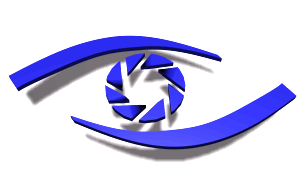

Consider the 3-dimensional world projected through some point in space
(the camera) onto some 2-dimensional plane in space (the image).
This is the basic pin-hole camera model most of our work assumes.
This model allows us to formalize computer vision
using a geometric and algebraic language.
In this language we prove fundamental constraints and invariants
between images and objects that can be used to develop algorithms for wide
array of tasks.
Most of the work we do is for the uncalibrated case.
Plane + Parallax provides the
basis for 3D scene analysis even in difficult scenarios where estimation
of scene geometry or camera geometry is difficult.
Direct estimation of 3D motion is a difficult and ill-conditioned
problem due to the large number of degrees of freedom. On the other hand
planer motion estimation is a much easier problem with only 8 unknown
variables in the projective model.
Plane + Parallax builds on top of a 2D technique of motion estimation by
viewing 3D space relative to some arbitrary planar surface in the scene.
The core of the method is detecting a single planar surface in the scene
directly from image intensities and computing its 2D motion in the
image plane. The detected 2D motion is used to register the images so that
the planer surface seems stationary.
The parallax is defined as the resulting residual image displacement field.
In affect the registration cancels camera rotation, thus the disparity
field is affected only by 3D translation of the camera.
The magnitude of each parallax displacement is directly related to
its perpendicular distance from the planer surface defining a 3D structure
relative to our plane.
This approach can be applied to many image tasks such as calculation of
ego-motion
and detection of
moving objects.
Algorithms based on this method are robust and allow
multiple moving objects and occlusions.
Selected Papers
Michal Irani, Benny Rousso, Shmuel Peleg
Robust Recovery of Ego-Motion
CAIP 1993, Budapest, 13-15 Sept 1993.
Michal Irani, Benny Rousso, Shmuel Peleg
Computing Occluding and Transparent Motions
IJCV, Vol 12 No. 1, January 1994
A. Shashua and N. Navab.
Relative Affine Structure: Canonical Model for 3D from 2D
Geometry and Applications.
PAMI Vol. 18(9), 1996.
Given a few images of a 3D scene, the relationships exist the
images for a given point in the world are studied.
For a projective transformation from 3D space to image plane, there are
relationships between images that satisfy trilinear constraints.
The Trilinear Tensor is a set of coefficients for these trilinear constraints
that solve the unique geometric relations between
three uncalibrated projective cameras.
It is a powerful tool for the analysis of multiple images of a scene.
Given seven matching triplets across three views we can calculate
these 27 coefficients by solving linear equations.
The Trilinear Tensor is uniquely determined for any camera configuration
of three views, including the case when the three camera centers are
collinear, its coefficients can be calculated directly from this configuration.
This tensor contains within much information the most important being:
the projection of any scene point across the three views must satisfy this set
of trilinear equations.
We list some of the advantages of the Trilinear Tensor.
The Trilinear Tensor has no critical surface and therefore numerically stable.
The Trilinear Tensor is structure invariant, no segmentation is needed and
all scene points can participate in its calculation.
Many interesting geometric relationships can be derived from
this tensor: camera translation, camera rotation, epipolar geometry,
fundamental matrix, intrinsic homographies, relative affine structure.
Currently the tensor assumes prior correspondence of points for it calculation,
in development is use of the constant brightness equation for direct
calculation of the tensor from image intensities.
One of our successful algorithm based on the tensor is a new method to
represent scenes that avoid 3D.
Selected Papers
A. Shashua.
Algebraic Functions For Recognition.
IEEE Transactions on Pattern Analysis and Machine
Intelligence (PAMI) Vol. 17(8), pp. 779--789, 1995.
A. Shashua and M. Werman
Trilinearity of Three Perspective Views and its Associated Tensor
Int. Conf. Computer Vision, Boston, June 1995.
A. Shashua and S. Avidan.
The Rank4 Constraint In Multiple View Geometry.
To appear in ECCV, April 1996.
Benny Rousso, Shai Avidan, Amnon Shashua, Shmuel Peleg
Robust recovery of camera rotation from three frames
ARPA Image Understanding Workshop, February 1996.
A.Shashua and P. Anandan.
Trilinear Constraints Revisited: Generalized Trilinear
Constraints And The Tensor Brightness Constraint.
In Proc. of the ARPA Image Understanding Workshop, Palm Springs, Feb.
1996.

